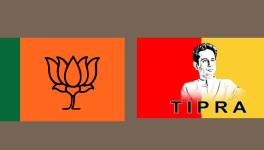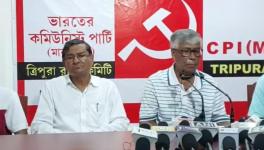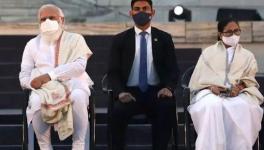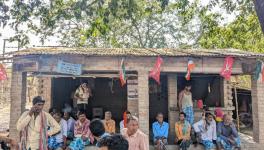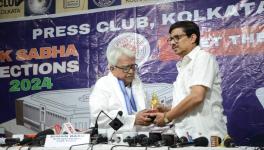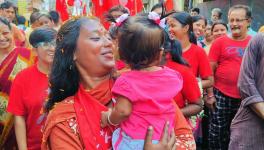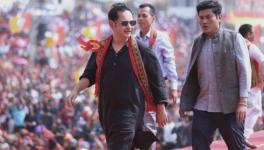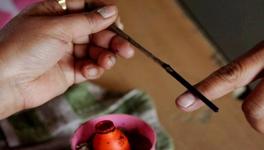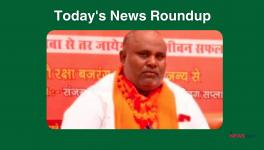Tripura Elections: How Tipra Motha Helped BJP Scrape Through
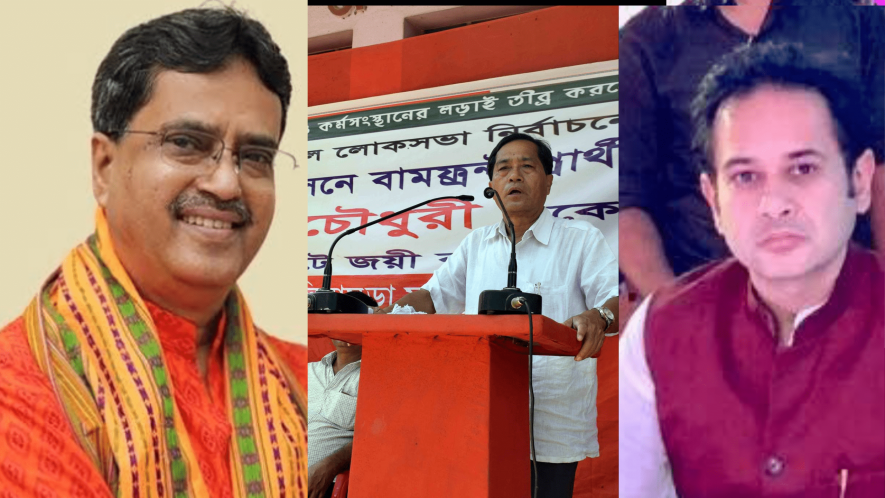
Manik Saha, Jitender choudhary and Pradyot Kishore Debbarma. Image Courtesy: Twitter
In Tripura, the results of the Assembly elections would seem to indicate that the incumbent BJP-IPFT alliance comfortably won getting 33 seats in the 60-member House, and garnering about 40% of the vote share. Their seats have come down from 43 in 2018, and vote share too has dipped from 51% last time.
This victory, however, comes with a portentous development – the Bharatiya Janata Party (BJP) has bargained away its previous tribal ally, the Indigenous People’s Front of Tripura (IPFT), which has been replaced by the Tipra Motha, an outfit led by the erstwhile Tripura royalty which openly espouses a new Tipraland state comprising all tribal dominated areas. On the face of it, Tipra Motha fought against the BJP, but the election results indicate that the BJP’s victory was helped in no small measure by the Motha. In the campaign, too, BJP played upon the fears of the non-tribal population (mainly Bengalis) about the rise of Motha, while the Motha campaigned only on its tribal agenda.
Motha Confined to Tribal Seats
Before coming to how the Motha helped BJP win, it is instructive to look at the results across the three types of seats, general or unreserved, SC (Scheduled Castes) reserved and ST (Scheduled Tribes) reserved. The chart below shows vote shares of the three principal contenders across these three types of seats.
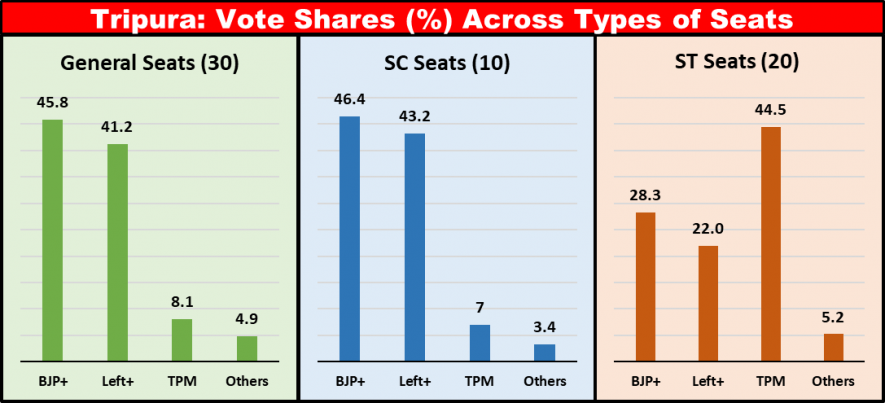
What this shows is that the Tipra Motha primarily got support in the 20 tribal reserved seats, getting nearly 45% of votes in them. They won 13 of these seats. This is not unexpected because the Motha remains a tribal outfit and its target was the tribal voters.
However, Motha did contest among the other unreserved and SC reserved seats, too, getting just 8% of votes in the former and 7% in the latter, and winning no seats. That’s a clear indication that it was not a serious contender in these seats. The main fight in these two segments was between BJP and the Left-Congress alliance, as can be seen from their respective vote shares. Among the 30 general seats, BJP got nearly 46% votes and won 19 seats while the Left-Congress alliance got 41% votes and won 11 seats. In the 10 seats reserved for SC community candidates, BJP got just over 46% votes and won seven seats while the Left alliance got 43% votes and three seats.
Motha’s Role in Non-Tribal Seats
It is in these 40 non-tribal seats that the role of Tipra Motha in helping BJP win lies hidden. There are 12 general seats and four SC reserved seats in which Tipra Motha has got more votes than the difference between winning BJP candidate and second placed Left-Congress candidate. Names of these constituencies, the winning margins of BJP candidates and votes cast for Tipra Motha are summarised in the table below. Data is drawn from results put up by Election Commission of India.
It may be asked whether it is right to assume that Tipra Motha votes would have gone to the Left alliance. The answer to that is that it is fair and reasonable to assume that the bulk of these votes would accrue to Left alliance because: a) Tipra Motha was not a serious contender and the votes they have got are not sufficient to put them anywhere winning these seats; and b) Tipra Motha was contesting against the BJP and taking public positions criticising it, there was widespread public discontent against the incumbent BJP and so those voting for the Motha would mostly be voting against the BJP. Effectively, the Motha took away a small but crucial chunk of votes from the Opposition and thus helped BJP win.
Why can’t this same logic be extended to the tribal reserved seats? Because in those 20 seats, Tipra Motha was itself the main contender against the BJP – it was not ‘cutting’ Opposition votes, rather it was the Opposition itself. That is why it is reasonable to apply this logic only to the unreserved (general) seats and to the SC reserved seats.
Behind the Scenes arrangement?
It is not unrealistic to deduce that there was some kind of agreement or arrangement that the Motha had entered into with the BJP on these unreserved and SC reserved seats. There were high-level talks between BJP and Motha leaders in New Delhi, as late as January 25, according to media reports. But, reportedly, the BJP top brass was wary of giving a written assurance on the demand for Greater Tipraland raised by the Motha. This can also be seen as paving the way for an informal or behind the scenes arrangement which doesn’t put the BJP in the unenviable position of having compromised with the Motha’s demands.
After the results were announced on March 2, Motha supremo and royal scion Pradyot Kishore Manikya Debbarma revealed his inclinations further when he reportedly told the media that the Tipra Motha would provide constructive opposition and not align with the CPI(M) or Congress in the new Assembly.
"We are the second largest party so we will sit in the constructive opposition but will not sit with CPM or Congress. We can sit independently. We will help the government whenever they need," Debbarma was reported to have said.
Debbarma’s antecedents, too, point to his natural inclination to align with anti-communist forces. His family – erstwhile rulers of Tripura – were hostile to the communist movement in the state from before Independence. They had aligned with Congress for decades and the main political battle was always with the CPI(M), which had a strong base among the tribals. In fact, the CPI(M) emerged as the only party which successfully united all sections of people in Tripura – tribals as well as non-tribals. So, for Debbarma to overtly or covertly align with the BJP, which is now the spearhead against communists in the state, is not unimaginable.
The reason why this turn of events holds dangerous portents for the future is that any escalation of the separate tribal land demand will deepen the divide between Bengalis and tribals, recalling the violence and bloodshed that haunted Tripura for decades till the beginning of 1990s. The Left Front not only rebuilt harmony between the various sections of people but also successfully took the wind out of the violent separatist movements, ultimately leading to the withdrawal of AFSPA or Armed Forces Special Powers Act, and demilitarisation of the state. There are fears that those days of bloodshed might return if the current divisions are played up for narrow political gains.
Get the latest reports & analysis with people's perspective on Protests, movements & deep analytical videos, discussions of the current affairs in your Telegram app. Subscribe to NewsClick's Telegram channel & get Real-Time updates on stories, as they get published on our website.









